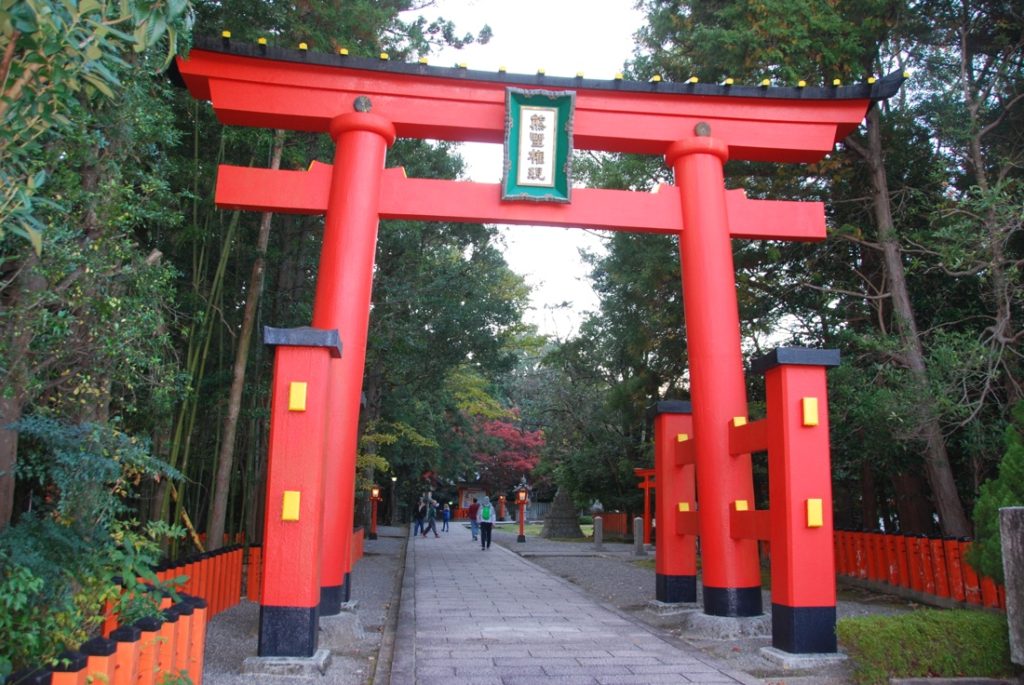 The purpose of the Kumano Kodo pilgrimage is to visit each of the three Grand Shrines which make up the Kumano Sanzan. There are several routes to accomplish this. Back in ancient times the Japanese imperial family traveled from west to east on the popular Nakahechi Route. Some pilgrims came from north to south, down the coastal Iseji Route, after worshipping at the famous Ise Grand Shrine. Others took the mountainous inland road from the Buddhist temple called Koyasan along the Kohechi route which is also north to south. I was thrilled that we made it to all three of the Kumano Grand Taisha, but we didn’t hike all of it.
The purpose of the Kumano Kodo pilgrimage is to visit each of the three Grand Shrines which make up the Kumano Sanzan. There are several routes to accomplish this. Back in ancient times the Japanese imperial family traveled from west to east on the popular Nakahechi Route. Some pilgrims came from north to south, down the coastal Iseji Route, after worshipping at the famous Ise Grand Shrine. Others took the mountainous inland road from the Buddhist temple called Koyasan along the Kohechi route which is also north to south. I was thrilled that we made it to all three of the Kumano Grand Taisha, but we didn’t hike all of it.
I realized our limitations, six kids between ages 10 to 16, were going to hold us back. My initial hope was to travel down the Iseji Route and get a glimpse of the coast. The right way to hike any of it is to stay at various minshuku (Japanese guesthouse with a shared setting) or ryokan (traditional Japanese inn) along the path and advance your progress along the trail each day. We saw a lot of backpackers, with big packs, covering a lot of ground. There are a lot of smaller shrines called oji to look at along the way.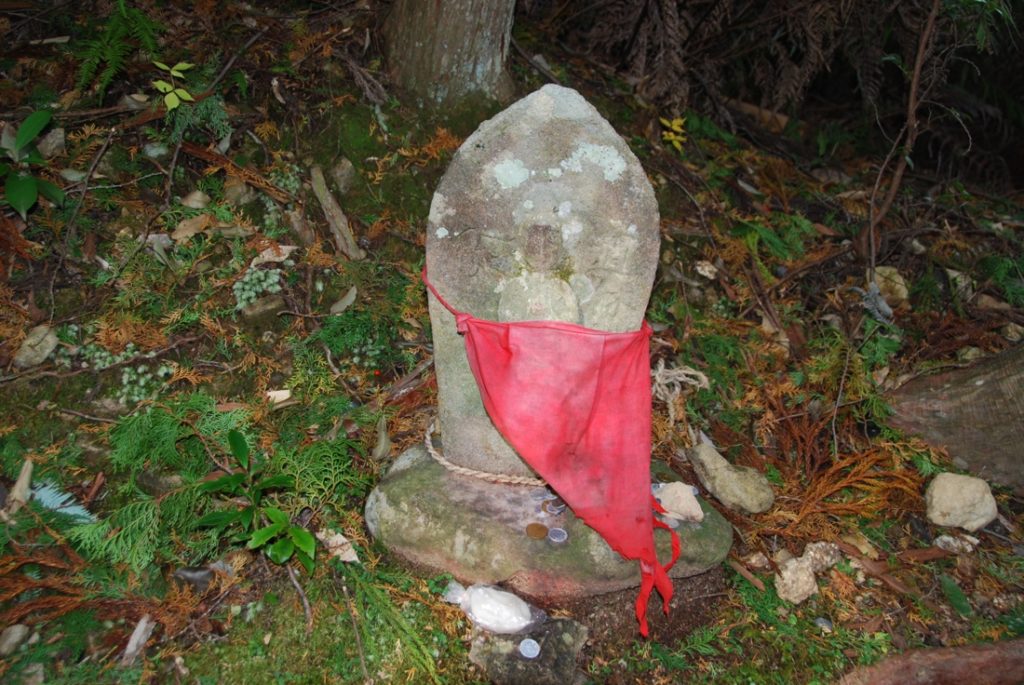 Instead, we stayed at Omoya, our Airbnb house that I found near the Kumano Hongu Taisha, and just made day trips from there. We traveled by car to both the Kumano Hayatama Taisha and the Kumano Nachi Taisha. But it was the only way we were going to get to see them all. We completed a 2.5 hour hike to the Kumano Hongu Taisha and it was a lot of fun and not too hard. If we had more time we definitely could have covered more of the trail. I had read that this route we hiked, from Hosshinmon-oji to Hongu Taisha, is part of the minimum requirement to qualify for pilgrim status. The rest of the requirement is to visit the other two shrines. So we can officially be Kumano Kodo pilgrims!
Instead, we stayed at Omoya, our Airbnb house that I found near the Kumano Hongu Taisha, and just made day trips from there. We traveled by car to both the Kumano Hayatama Taisha and the Kumano Nachi Taisha. But it was the only way we were going to get to see them all. We completed a 2.5 hour hike to the Kumano Hongu Taisha and it was a lot of fun and not too hard. If we had more time we definitely could have covered more of the trail. I had read that this route we hiked, from Hosshinmon-oji to Hongu Taisha, is part of the minimum requirement to qualify for pilgrim status. The rest of the requirement is to visit the other two shrines. So we can officially be Kumano Kodo pilgrims!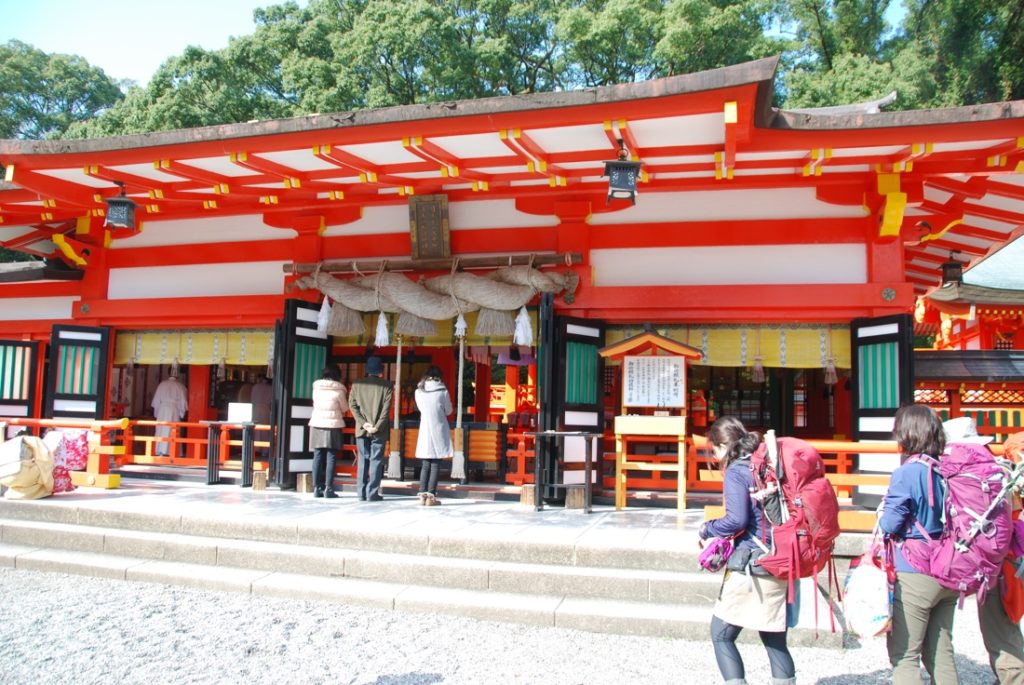 Here are some sights from each of the Kumano Sanzan and the surrounding areas, starting with the Kumano Hayatama Taisha.
Here are some sights from each of the Kumano Sanzan and the surrounding areas, starting with the Kumano Hayatama Taisha.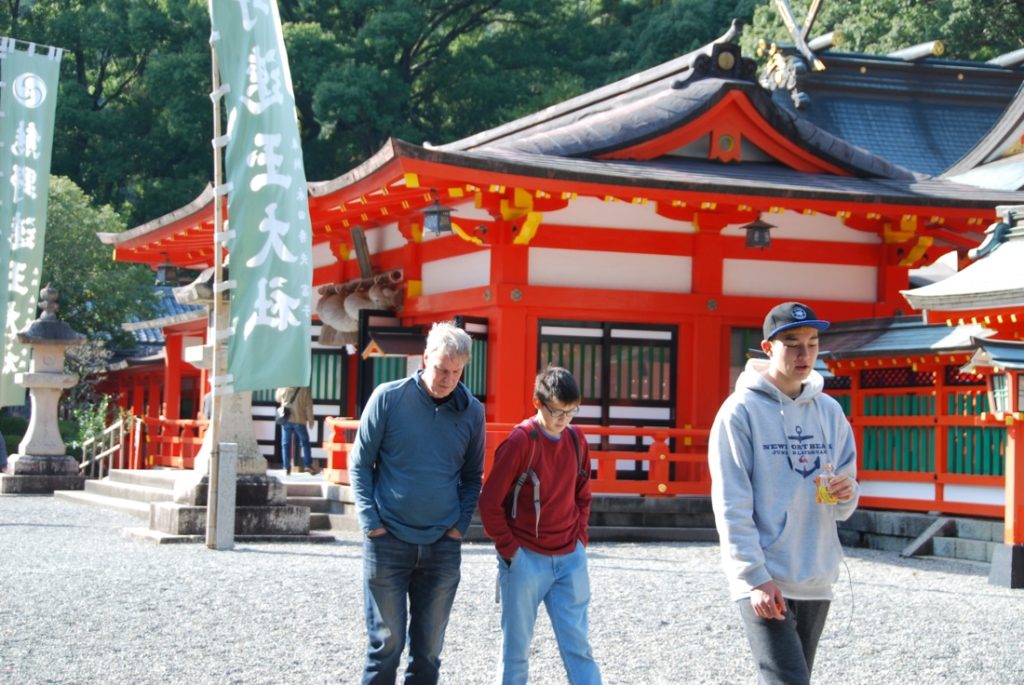 Yatagarasu is a three-legged crow-god and is specifically a symbol of guidance. It is featured prominently at Kumano Sanzan. Several Asian countries believe in this creature’s existence and hence there are several legends associated with the bird. One such story is that this crow was sent as a messenger by the sun goddess Amaterasu to guide Emperor Jimmu as he became lost in Kumano.
Yatagarasu is a three-legged crow-god and is specifically a symbol of guidance. It is featured prominently at Kumano Sanzan. Several Asian countries believe in this creature’s existence and hence there are several legends associated with the bird. One such story is that this crow was sent as a messenger by the sun goddess Amaterasu to guide Emperor Jimmu as he became lost in Kumano.
One blogger noted that a sign at one shrine (Kumano Hongu I think) notes that the Japanese soccer association has adopted Yatagarasu as its mascot to make sure the ball finds its way into the goal. Clever! I suppose most Japanese people probably know this bird from watching soccer.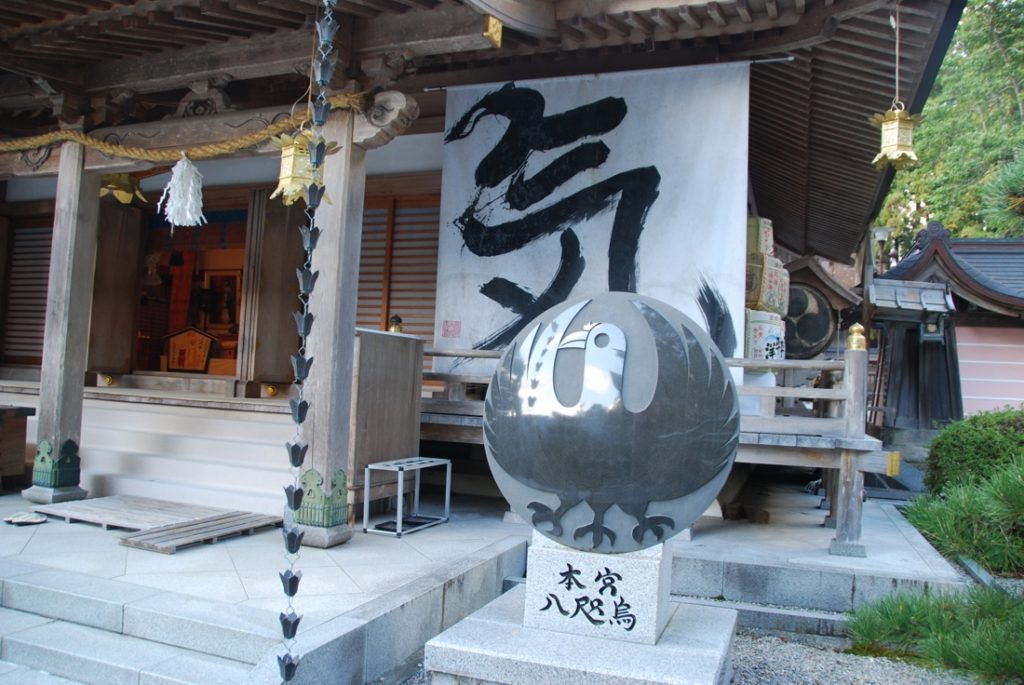
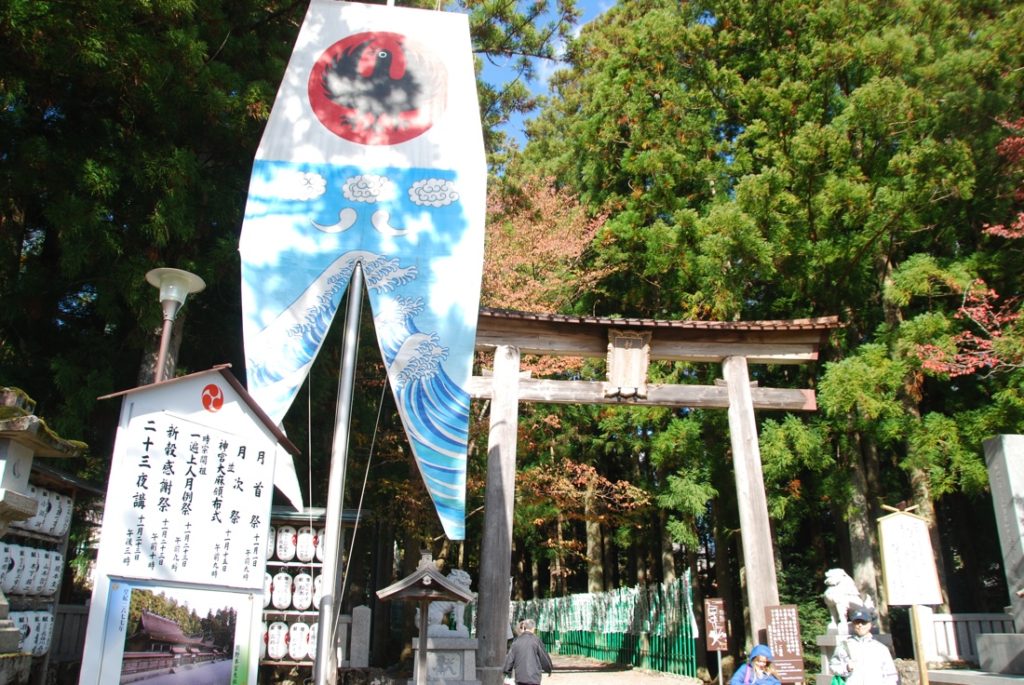
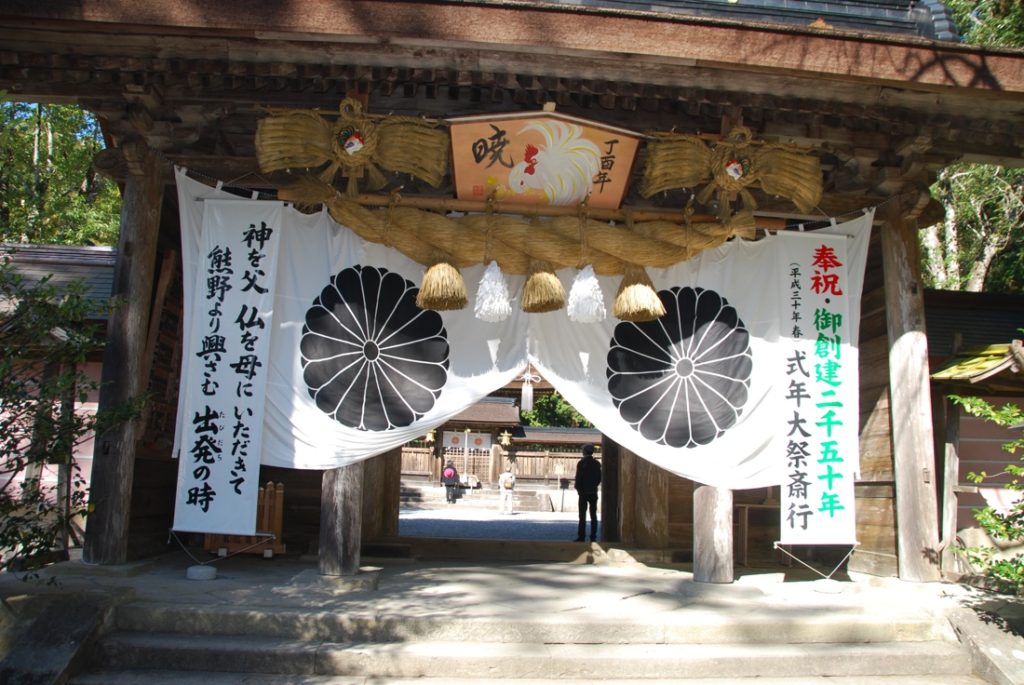
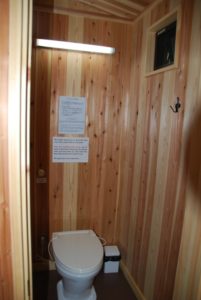 Somewhere along the wooded trail John found a toilet. He urgently called me over to have a look at it. It was a beautiful, new, cedar lined toilet stall. It looked like a cedar closet in someone’s nice house. Except it had a toilet in it. John was fascinated by the fact that it smelled like cedar in there. And it had a coat hook, too. Though I didn’t use this toilet, I see from the photo that it is plugged into the wall. So I’m guessing it has a heated toilet seat… out in the woods in winter! Now that’s first class hiking.
Somewhere along the wooded trail John found a toilet. He urgently called me over to have a look at it. It was a beautiful, new, cedar lined toilet stall. It looked like a cedar closet in someone’s nice house. Except it had a toilet in it. John was fascinated by the fact that it smelled like cedar in there. And it had a coat hook, too. Though I didn’t use this toilet, I see from the photo that it is plugged into the wall. So I’m guessing it has a heated toilet seat… out in the woods in winter! Now that’s first class hiking.
This next sign is from Haraido-oji, the small shrine on the trail just before we reached Kumano Hongu Taisha. It reads, in part, “One of the goals of the Kumano pilgrimage is to rid one’s body and spirit of impurities from past and present lives, and to be ritually reborn and rejuvenated by the virtuous powers of the Kumano deities.”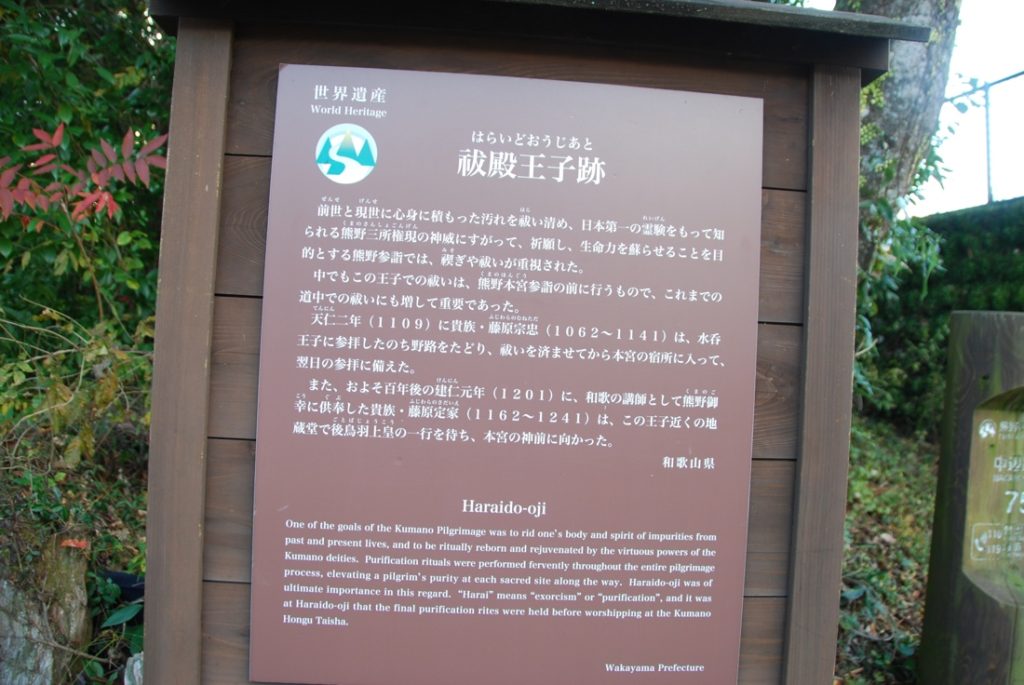
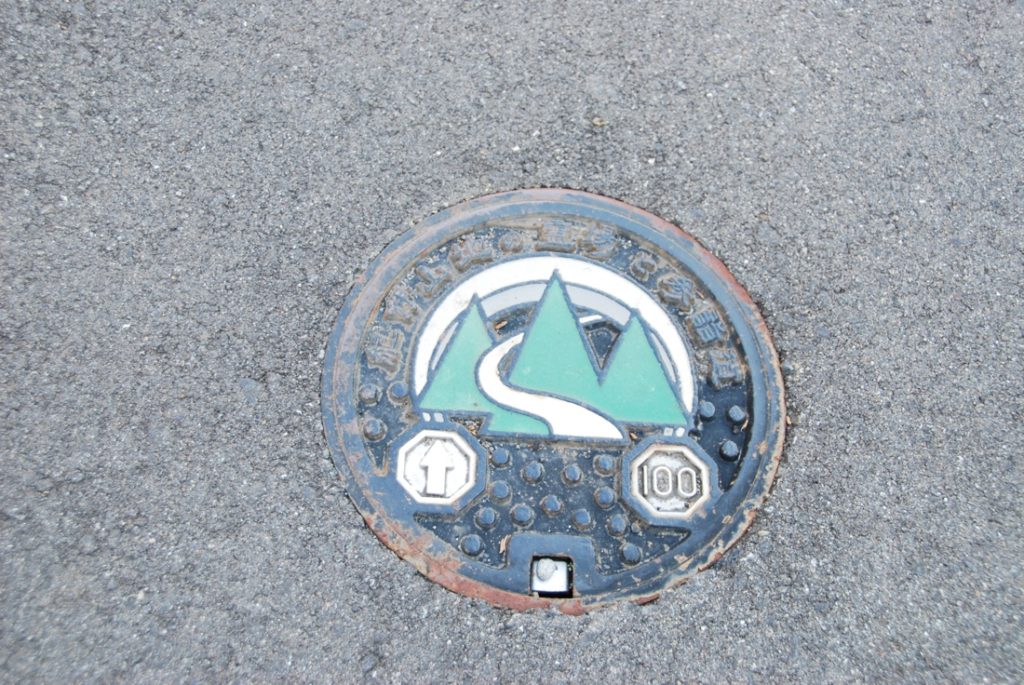 In the top left corner of the Haraido-oji sign it says World Heritage, with a circular symbol of trees and a path running through them. At a few points along the trail I noticed this same symbol as a small manhole cover.
In the top left corner of the Haraido-oji sign it says World Heritage, with a circular symbol of trees and a path running through them. At a few points along the trail I noticed this same symbol as a small manhole cover.
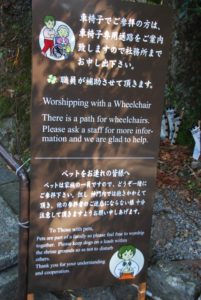 I love this sign at Kumano Hongu Taisha. At the top it says please ask about a path for wheelchairs if needed. But at the bottom it talks about bringing your pets with you. The sign says, “To Those with pets, Pets are part of a family so please feel free to worship together. Please keep dogs on a leash within the shrine grounds so as not to disturb others.” That’s amazing! But I wonder what would happen if we showed up with our cats? They don’t like leashes much so I’m not sure how well behaved they would be.
I love this sign at Kumano Hongu Taisha. At the top it says please ask about a path for wheelchairs if needed. But at the bottom it talks about bringing your pets with you. The sign says, “To Those with pets, Pets are part of a family so please feel free to worship together. Please keep dogs on a leash within the shrine grounds so as not to disturb others.” That’s amazing! But I wonder what would happen if we showed up with our cats? They don’t like leashes much so I’m not sure how well behaved they would be.
Avalon was so excited to see a real, working well on the trail. I think we’ve seen wells before, but they probably were not in operation or they were just for decoration.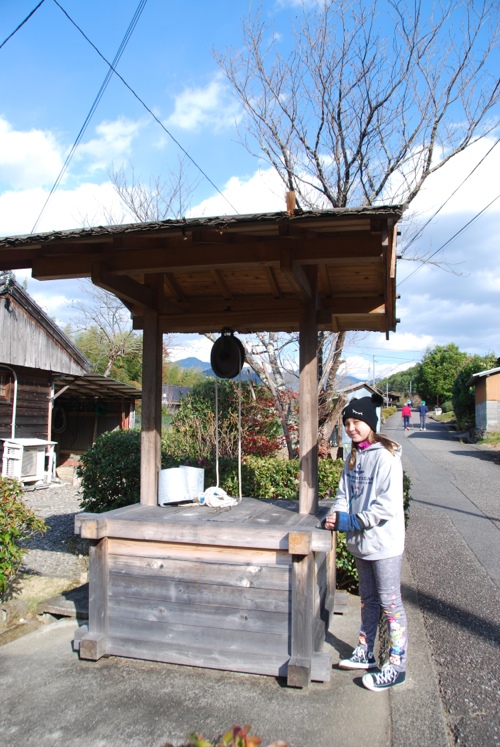 The most beautiful photos can be taken from behind the three-story pagoda at Kumano Nachi Taisha. The waterfall in the background and the pagoda in the foreground combine for a beautiful sight. We got lucky being there in autumn as the trees show off their colors.
The most beautiful photos can be taken from behind the three-story pagoda at Kumano Nachi Taisha. The waterfall in the background and the pagoda in the foreground combine for a beautiful sight. We got lucky being there in autumn as the trees show off their colors. 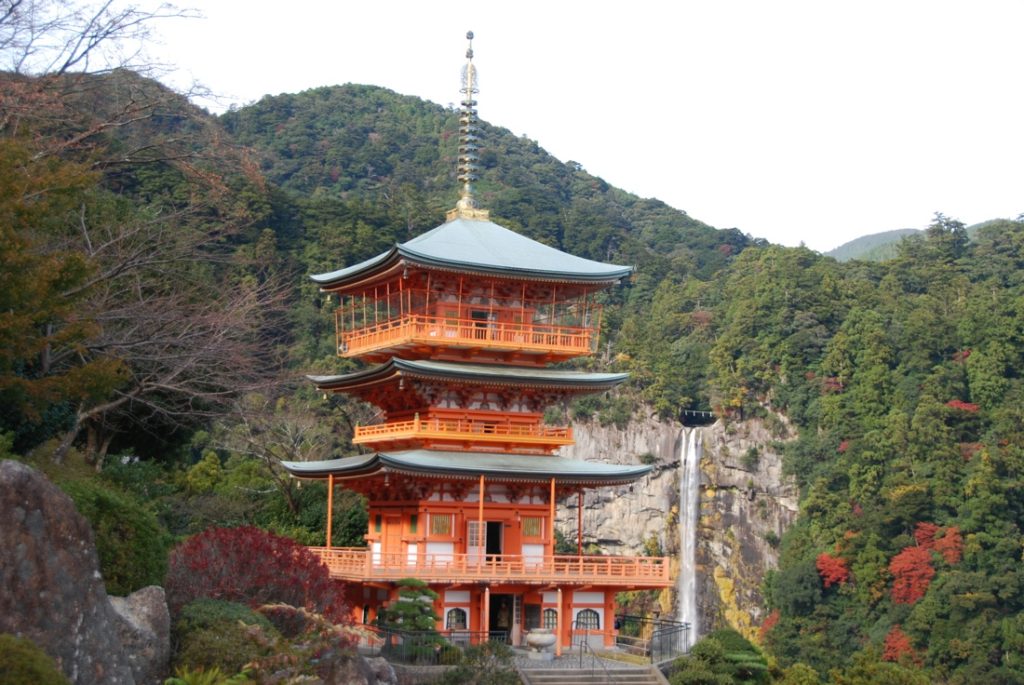
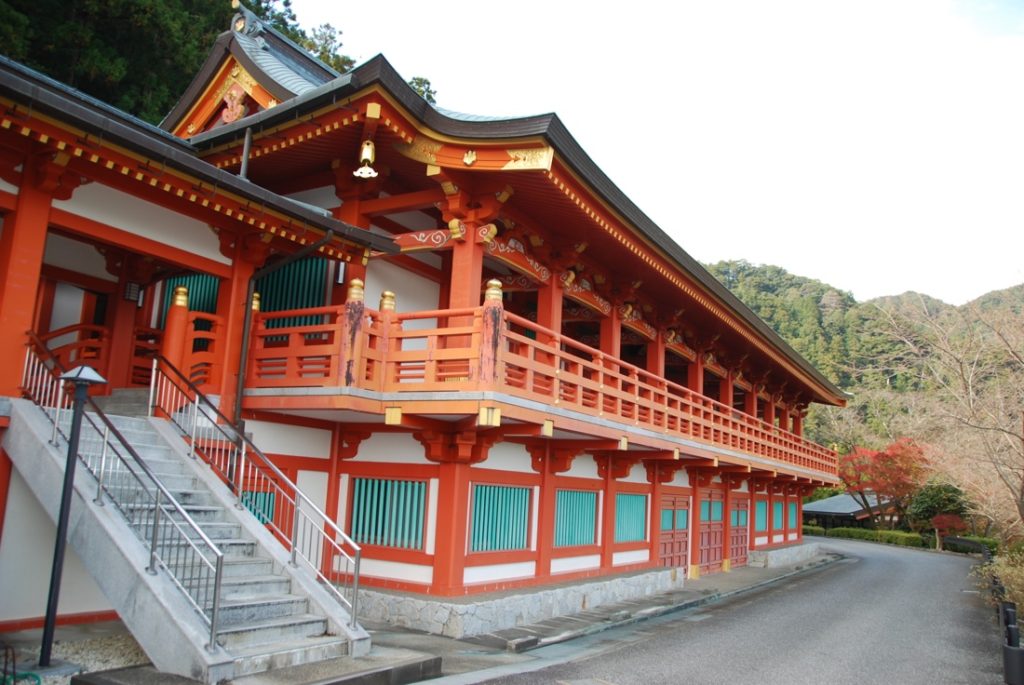
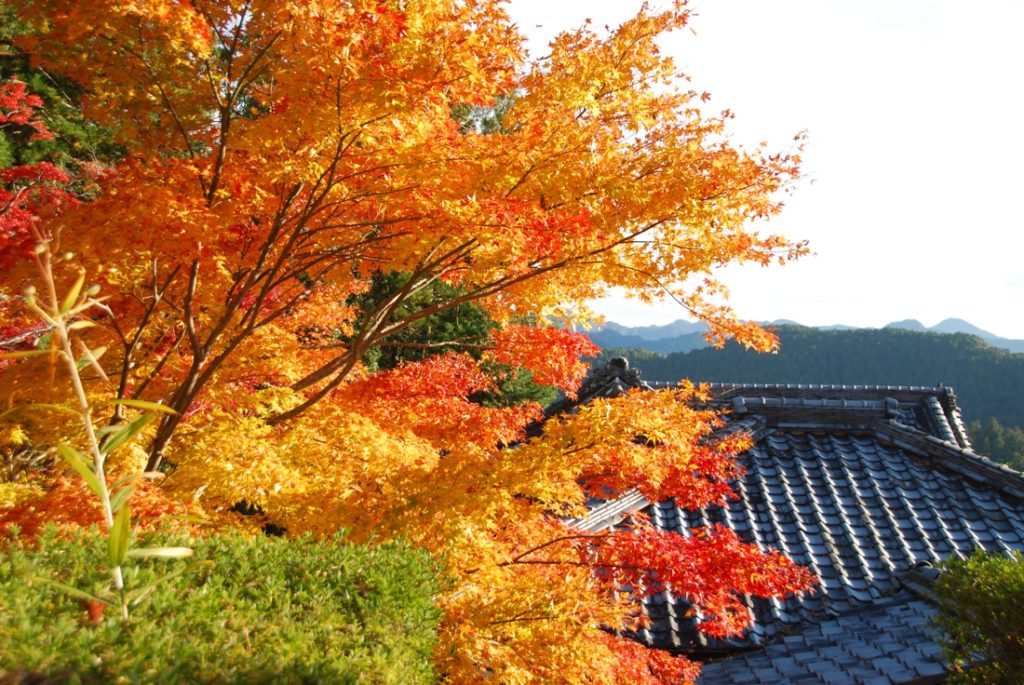
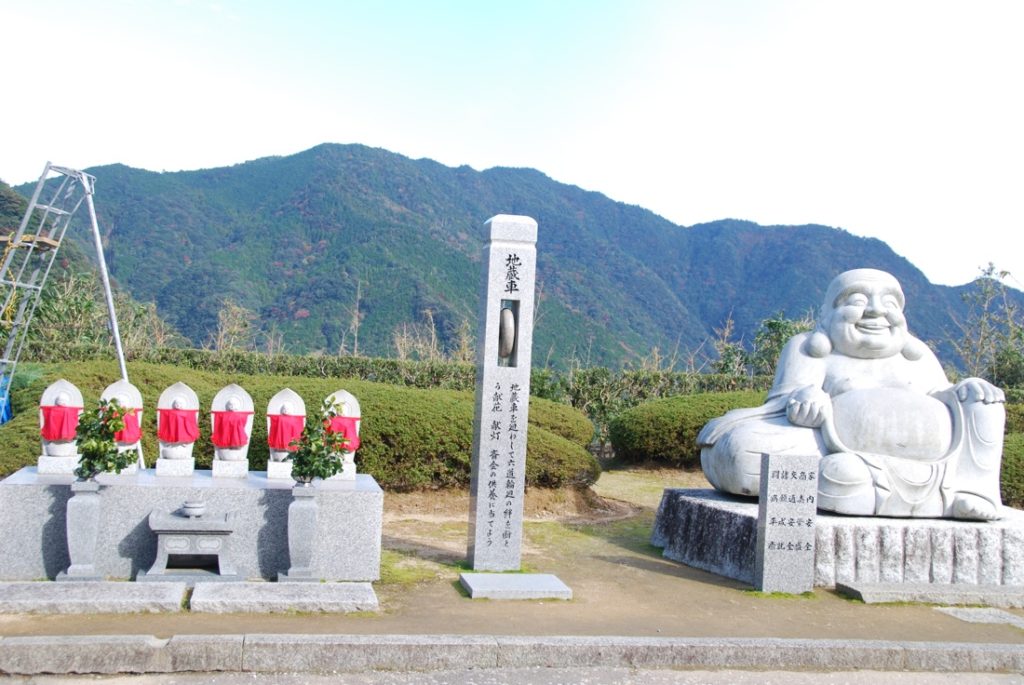
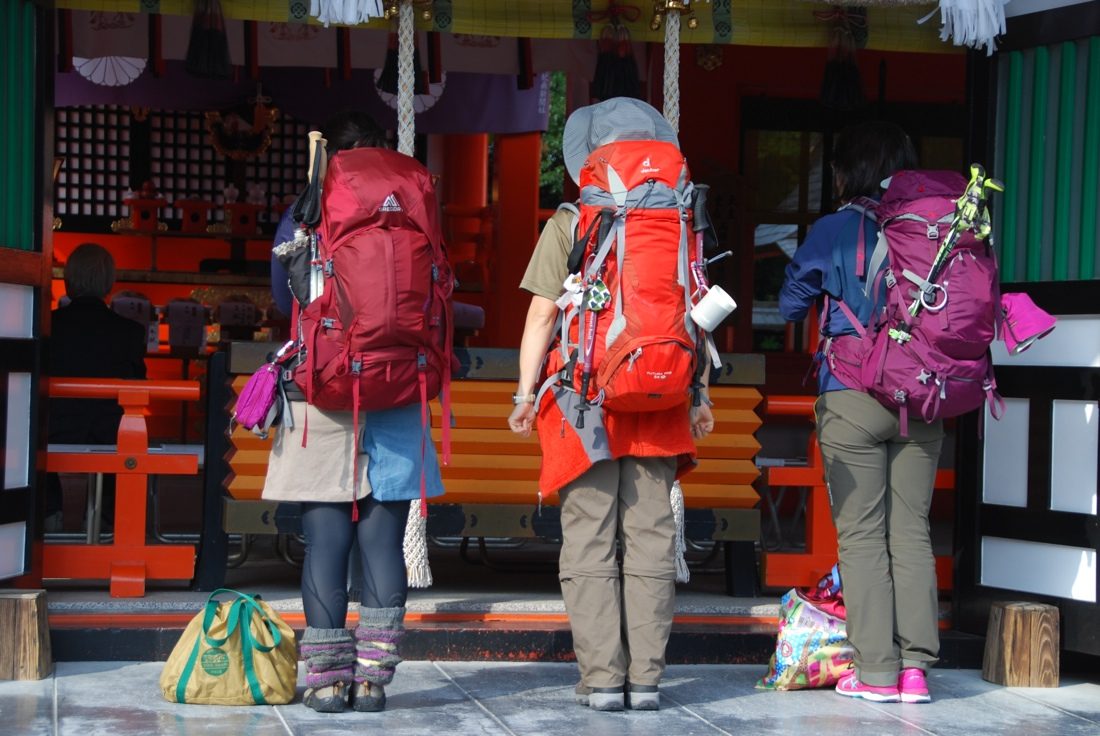
Comments (0)